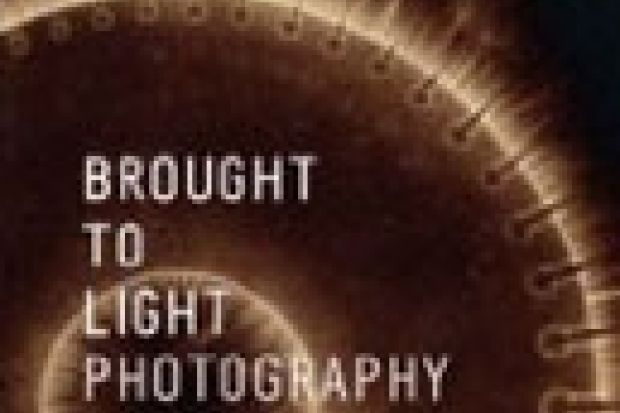The conjunction of photography and science has had something of a history, but perhaps not one that has been explored enough. Photography, after all, is the art form (though there are many in the art world who would deny that it is an art form) that was born of optical science married to chemistry in the late 1830s - in France by Louis-Jacques-Mande Daguerre, and in England by William Henry Fox Talbot. Brought to Light: Photography and the Invisible, 1840-1900 is the sumptuously illustrated catalogue of an exhibition of the same name which, after a lengthy run in late 2008 in San Francisco, will be at the Albertina museum in Vienna from 20 March until 6 June.
The first such exhibition of historic photographs of scientific importance was held more than 20 years ago at what was then the National Museum of Photography, Film and Television (now the National Media Museum) in Bradford, and named, along with its accompanying book, Beyond Vision. Written by Jon Darius, who had been an astronomer before he became a museum curator, the criterion for inclusion in his selection was "that they be unique". Understandably, many of the images were astronomical in character. A second exhibition on this theme - its catalogue also published by Yale University Press - was shown at the National Gallery of Canada in 1997-98, and entitled Beauty of Another Order: Photography in Science. This took the form of seven extensively illustrated essays across the spectrum of the sciences.
Brought to Light also begins with a series of four illustrated essays, starting with "Sight Unseen: Picturing the Invisible" by Corey Keller, the curator of the exhibition and editor of the book. Her first sentence is controversial: "It is difficult to imagine a historical period richer in scientific discoveries than the years between 1800 and 1900." On the contrary, the period between 1900 and 2000 is probably even richer, but the legacy of Enlightenment science certainly provided a fertile ground for 19th-century discoveries, which were to be enhanced by the all-seeing eye of the camera, particularly in areas where the human eye was unable to register.
Jennifer Tucker's contribution, "The Social Photographic Eye", is an interesting resume of how amateur and professional scientists used photography to popularise science in many forms, yet "spurred widespread interest and aroused heated controversy in different social and cultural worlds, including the overlapping but distinct domains of science, crime, law, religion, and the supernatural".
The discoveries of X-ray photography and cinematography within a few months of each other in 1895 were quickly adapted by showmen and demonstrated to an eager public, and, argues Tom Gunning, came to be seen as twin tools for enhancing an invisible world, as microscopes and telescopes had done from the 17th century. He goes on to discuss how photography captured movement, and was assisted by new inventions such as electric spark photography; and concludes with a fascinating section on spirit photography.
The final essay is by Maren Groning and examines the role of the Austrian chemist Josef Maria Eder in scientific photography. Eder's seminal 1932 text Geschichte der Photography ("History of Photography") has long been available in translation, not least to the English-speaking world, and his role to date has been seen primarily as a historian. But Groning undertakes some interesting re-evaluation, along with telling the story of the eventual destiny of the photographic collections put together at Eder's institution in Vienna.
All these essays revolve around the same broad subject matter of the invisible worlds that can be revealed by photography, with some remarkable insights. However, the design decision to put the chapter section headings and footnotes in pale green was a mistake, compounded by making the point size of the footnotes so small that anyone over 50 will need a magnifying glass.
There then follows the plate section, divided into sections on Microscopes, Telescopes, Motion Studies, Electricity and Magnetism, X-Rays, and Spirit Photography, each section prefaced by a short and useful two-page mini-introduction. The plates are beautiful, and enough to make this reviewer wish for a ticket to Vienna to see the exhibition.
Among well-known images are those early photomicrographs taken by Talbot, using a solar microscope; but also the less well exposed (in the publication sense) but no less remarkable Snowflakes by Wilson Alwyn Bentley. The daguerreotypes of the Moon, by various photographers, are quite extraordinary, and Carleton E. Watkins' albumen print, Solar Eclipse, is exquisite. We are perhaps more familiar with Eadweard Muybridge's motion studies, famously showing the galloping horse with all its hooves in the air; but it is a bit of a mystery why he photographed a (naked) woman spanking a child from three viewpoints, even in the name of science.
Taken together, the essays and the photographs demonstrate the impact and excitement of discovering hitherto unseen marvels, revealed to a larger public than ever before. In addition, there is an extensive bibliography, and a full catalogue of the exhibition, making this a landmark addition to the slender literature on the history of scientific photography.
Brought to Light: Photography and the Invisible, 1840-1900
Edited by Corey Keller
Yale University Press, 208pp, £35.00
ISBN 9780300142105
Published 31 October 2009
Register to continue
Why register?
- Registration is free and only takes a moment
- Once registered, you can read 3 articles a month
- Sign up for our newsletter
Subscribe
Or subscribe for unlimited access to:
- Unlimited access to news, views, insights & reviews
- Digital editions
- Digital access to THE’s university and college rankings analysis
Already registered or a current subscriber? Login
